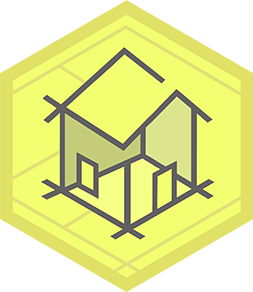Put Everything Together
Combine parts from previous activities to build a simple working model, such as a cardboard vehicle with a small battery motor, safely test it.



Step-by-step guide to Put Everything Together
Step 1
Gather your cardboard chassis parts wheels motor battery pack and tools on a clear flat table.
Step 2
Cut a rectangle from the cardboard to make the chassis the size you want your vehicle to be.
Step 3
Use a pencil to mark where the front axle the rear axle and the motor will sit on the chassis.
Step 4
Cut small slots or holes where you marked the axle supports and a small slot for the motor shaft to reach the axle area.
Step 5
Tape or glue short drinking straw pieces under the chassis at the axle marks to act as axle supports.
Step 6
Push the wooden skewers through the straw supports to make axles and push wheels onto each skewer end so they sit snugly.
Step 7
Attach a small bottle cap or tiny wheel to the motor shaft with tape or a dab of glue to make a drive wheel.
Step 8
Place the motor on the chassis so the drive wheel touches the rear axle wheel and tape the motor down firmly in that position.
Step 9
Secure the battery holder to the chassis with tape and make sure the battery switch is in the OFF position.
Step 10
Connect the motor wires to the battery holder terminals securely using tape or a battery snap so the wires do not pull loose.
Step 11
Put your vehicle on a smooth flat floor and switch the battery ON to test if it moves for a few seconds.
Step 12
If the vehicle needs fixing switch the battery OFF before touching anything on the model.
Step 13
Straighten the wheels or move the motor slightly and tighten any loose tape to improve rolling alignment.
Step 14
Decorate your vehicle using colouring materials and small details to make it look awesome.
Step 15
Take a photo or write about your finished vehicle and share your creation on DIY.org
Final steps
You're almost there! Complete all the steps, bring your creation to life, post it, and conquer the challenge!


Help!?
What can I use instead of wooden skewers, drinking straws, bottle caps, or the specific battery holder if I can't find them?
Use straight pencils or thin metal rods as axles instead of wooden skewers, short sections of pen barrels for the drinking-straw axle supports, a large jar lid or plastic bottle cap in place of the small bottle cap drive wheel, and a generic AA battery holder or battery snap taped to the chassis if you don't have the exact battery pack.
My vehicle won't move or the wheels are stuck—what should I check?
Switch the battery OFF first (step), then check that the straw supports under the chassis are not squeezing the skewers, widen or re-cut axle slots so the axles rotate freely, and make sure the motor drive wheel (bottle cap on the motor shaft) is positioned to touch the rear axle wheel without slipping.
How can I adapt this activity for younger or older kids?
For younger kids have an adult cut the cardboard chassis and pre-thread the skewers through the straw supports and use larger bottle-cap wheels so they can focus on taping the motor and decorating, while older kids can cut their own chassis, fine-tune motor placement to improve rolling alignment, and experiment with different drive-wheel sizes.
How can we extend or personalize the finished vehicle?
Enhance the model by adding a simple pivot for the front axle to create steering, wrap rubber bands around wheels for better traction, mount a second motor for more power, and then decorate and share a photo or write-up on DIY.org as suggested.
Watch videos on how to Put Everything Together
Objects that Fit Together | Matching Games for Kids | Develop Logic Skills for Children
Facts about model building and basic electronics for kids
⚙️ The wheel-and-axle is a classic simple machine that reduces friction, so even a small motor can move a cardboard car much farther with wheels.
🔋 A single AA battery can run a small DC motor for minutes to hours depending on the load—enough to power many cardboard vehicle projects.
📦 Cardboard becomes much stronger when folded into boxes or triangles—those folds add rigidity without extra material.
🚗 Motorized toy cars have delighted kids for over 100 years—early electric toys showed up in the late 1800s and early 1900s!
🧪 You can test your model like a scientist: time how long it takes to travel a set distance and calculate speed (distance ÷ time)!
How do I put everything together to build a simple cardboard vehicle with a small battery motor and test it safely?
What materials do I need to combine parts and build a working model vehicle?
What ages is this ‘put everything together’ model-building activity suitable for?
What safety tips should I follow when testing a cardboard vehicle with a small motor?


One subscription, many ways to play and learn.
Only $6.99 after trial. No credit card required



